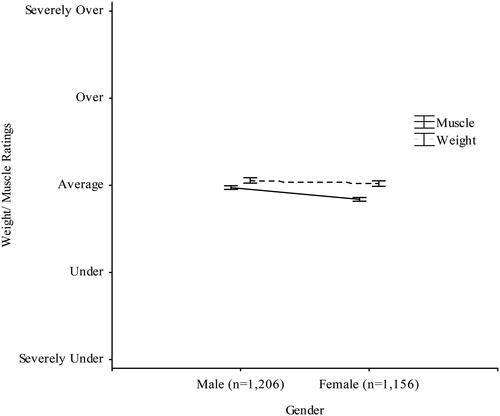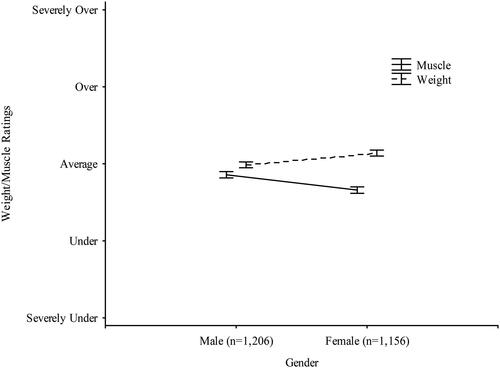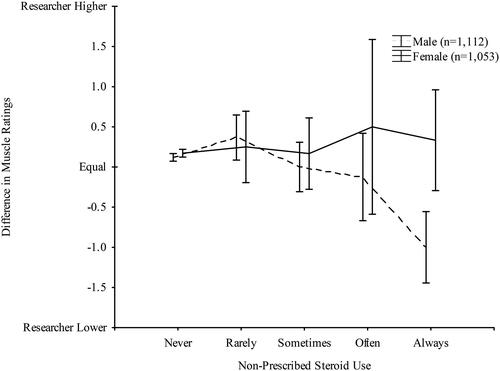Figures & data
Table 1. Frequencies of estimated age by each researcher.
Table 2. Frequencies of researcher ratings of weight.
Table 3. Frequencies of researcher ratings of muscle.
Table 4. Researcher agreement statistics for perceived muscle and weight of observed participants.
Table 5. Comparison of sample from Study 1 and Study 2 data collection on a Friday night.
Table 6. Descriptive statistics of participants drinking and drug behaviors.
Figure 1. Researcher ratings of participant perceived muscle and weight by gender. Error bars represent 95% confidence intervals.

Figure 2. Participant ratings of perceived muscle and weight size by gender. Error bars represent 95% confidence intervals.

Data availability statement
All data will be made available to other researchers.



